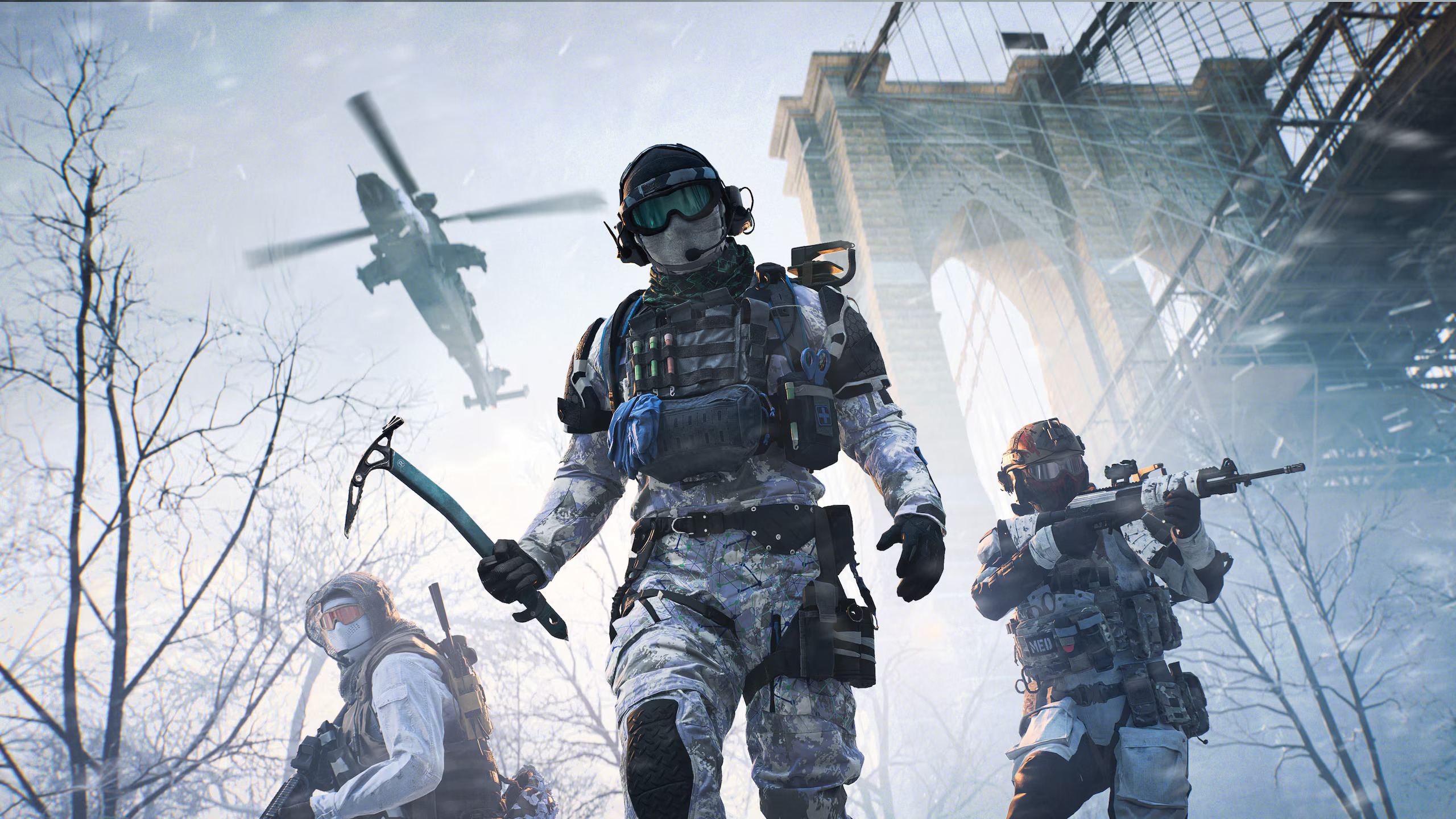Arcade Game Series: Galaga review — a classic soars on Xbox One and Steam
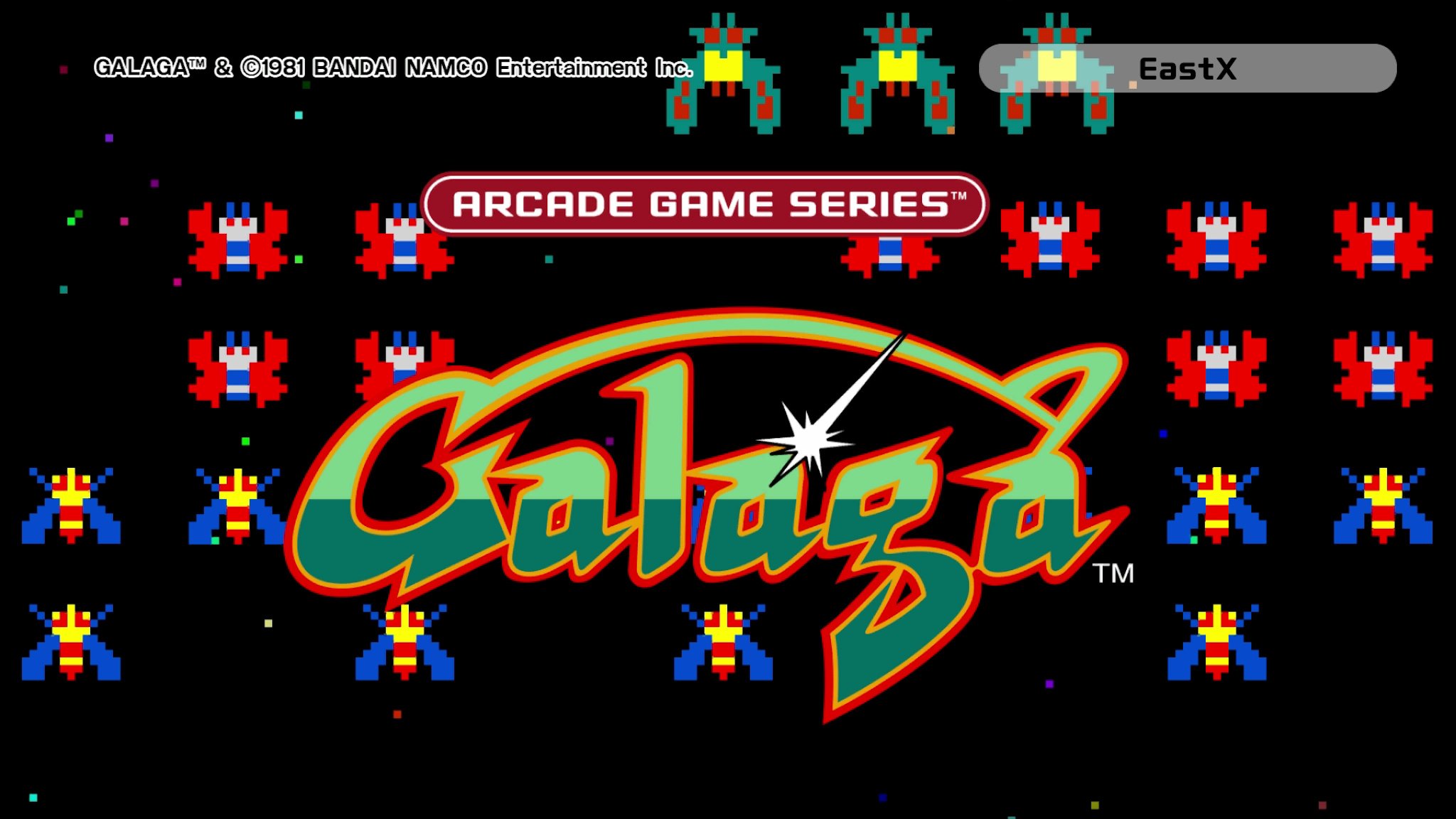
After debuting in arcades way back in 1981, Bandai Namco's Galaga has been ported to numerous platforms and received a handful of sequels. And although Xbox 360 Galaga is already backwards compatible, the Xbox One recently scored a fresh release as well. Arcade Game Series: Galaga is the latest re-release of the classic shoot 'em up.
How does this version improve on previous Galaga ports? Read our detailed review to find out!
The original arcade game
If you were born after the 1980s, it might surprise you to learn that Galaga is not the first game in its series. It's actually the sequel to Galaxian, a lesser known shoot 'em up that arrived in arcades in 1979. Galaga plays just like Galaxian and even features the Galaxian as an enemy, but the graphics and sprite designs show significant improvements. After Galaga's longstanding success, most sequels in the series have borne the Galaga name.
Galaga is a type of shoot 'em up known as a "fixed shooter." In this subgenre, players are restricted to one plane of movement. The ship can only move left and right, not up or down. That restriction keeps the controls simple, but it also makes things more challenging. You can only dodge to the sides, which often leaves nowhere to go when enemy fire litters the screen.
In each regular Galaga level, waves of enemies enter the screen and take up a fixed position at the top. Once all of the waves have arrived, they take turns flying down towards the player's ship. Some fire shots while they dive, whereas others only try to strike the ship directly. If the player manages to defeat all enemies, the next level begins. Challenge Levels in which the enemies fly away rather than staying on screen occur every few levels. It's a style of game that's been mimicked time and time again, but it's hard to top the condensed fun the original arcade classics.
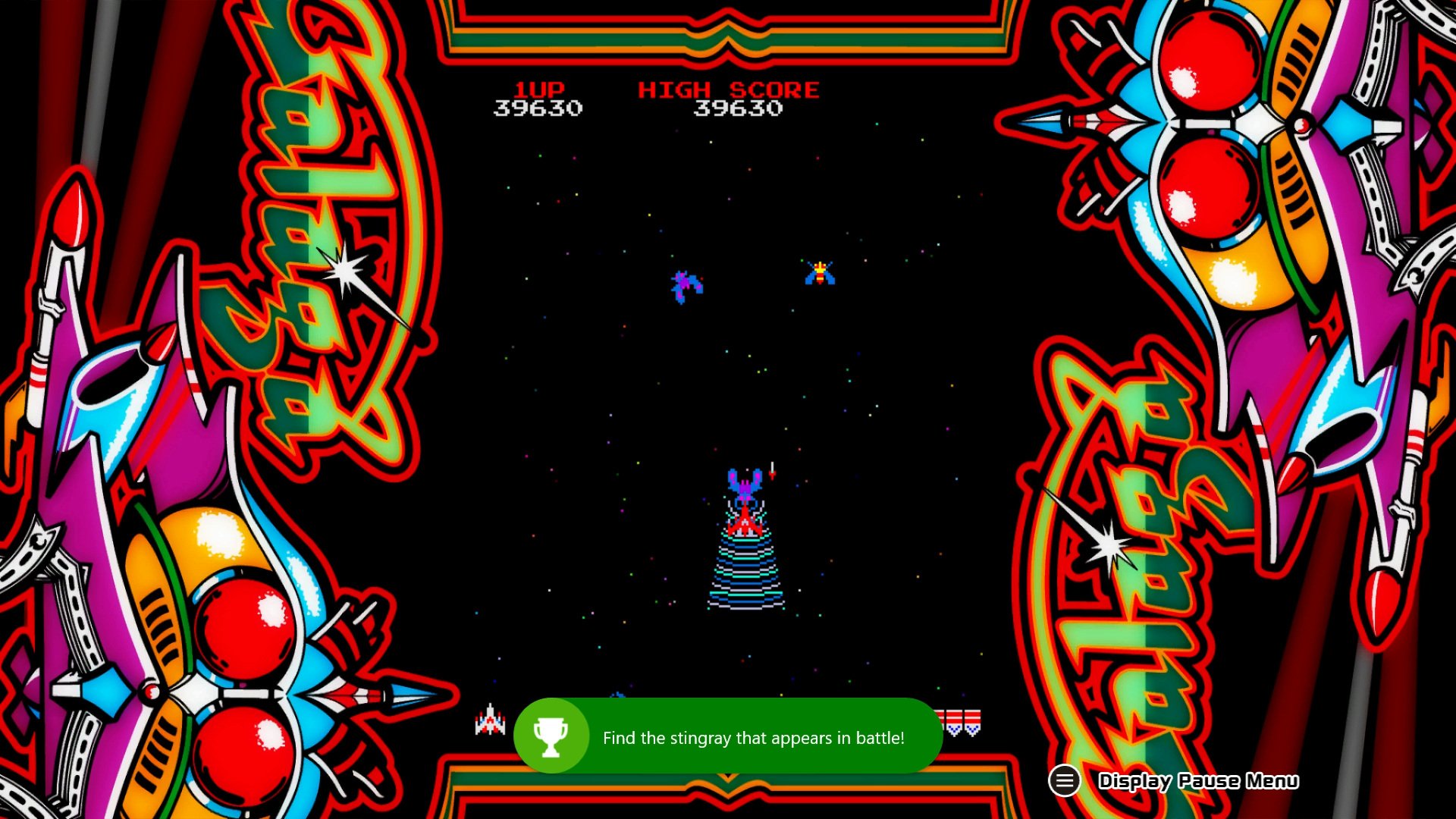
The original Galaga doesn't have any power-ups for players to collect, but it still has a unique method of powering up. A certain enemy called the Boss Galaga (or Galagan Commander) can fire a tractor beam at the player's ship. If it succeeds in capturing the ship, you can then shoot the Boss Galaga to get your ship back. The second ship then joins your current one as a Dual Fighter, doubling the shots you can fire at once. On the downside, a Dual Fighter is twice as large a target as a single one, making it hard to hold onto the second ship for very long.
Presentation: Xbox 360 versus Xbox One
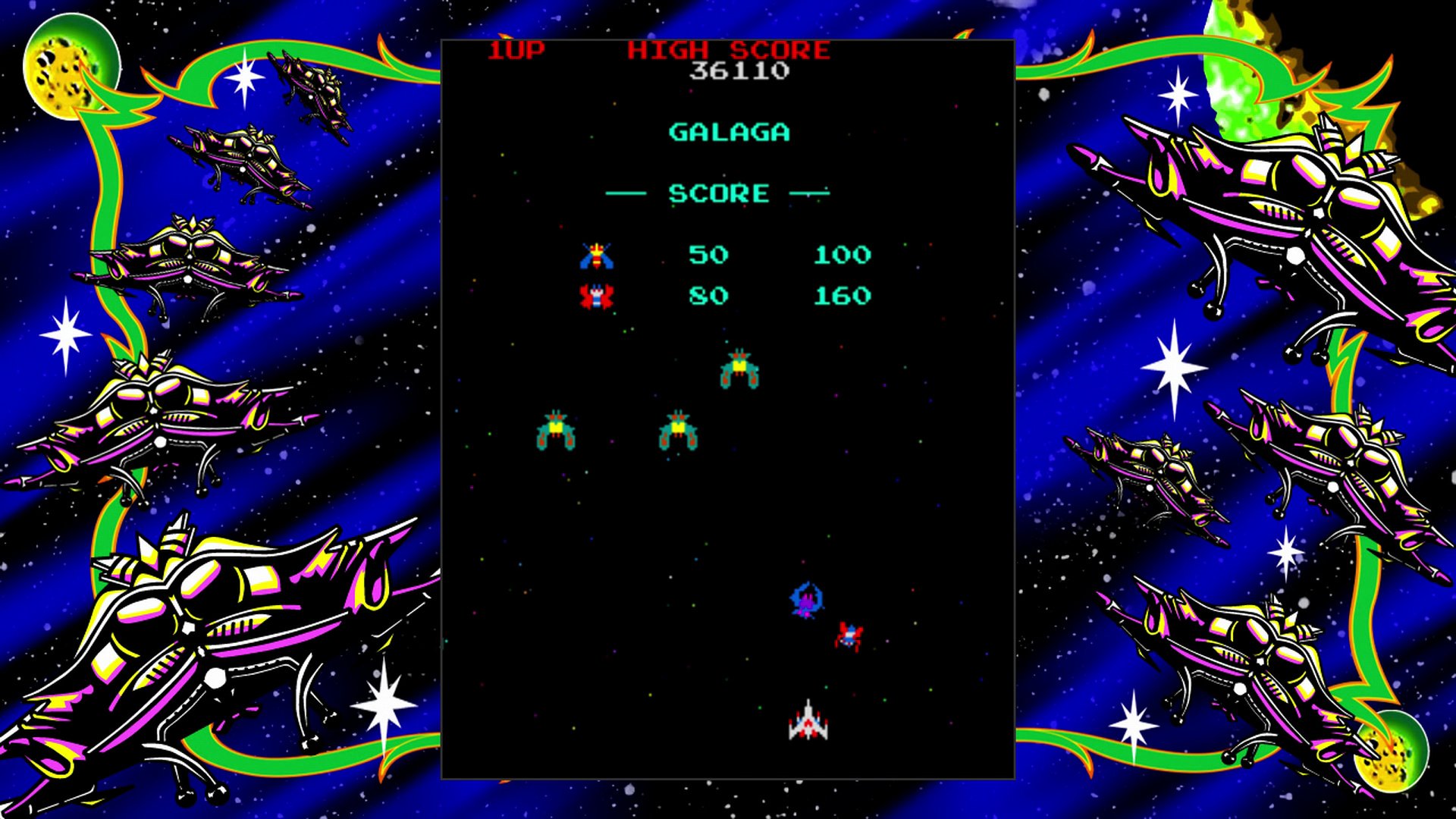
Galaga debuted on Xbox 360 way back in 2006, and that version is playable on Xbox One. You certainly could play that version and be happy with it, but the Xbox One version brings some worthwhile new features to the table.
All the latest news, reviews, and guides for Windows and Xbox diehards.
The Xbox 360 version of Galaga has a handful of enhancements over the original arcade game. Visually, the screen size and position can be adjusted. The widescreen border takes inspiration from the actual arcade bezel artwork, although the actual enemy artwork is different. Hopefully you don't find it distracting, because it can't be turned off.
In the gameplay department, players can set the number of starting lives and the score target for additional lives. You can also choose to start on any level you've reached before, making it so much easier to see higher levels. The Achievements are also quite easy, but like all early XBLA games, they only award a total of 200 Gamerscore.
Galaga on the Xbox 360 doesn't offer many visual or gameplay options. But like its fellow launch title Pac-Man, the integration of some of those options deserves recognition. The screen size and position and starting level options are integrated directly into the emulated arcade game's interface rather than external menus.
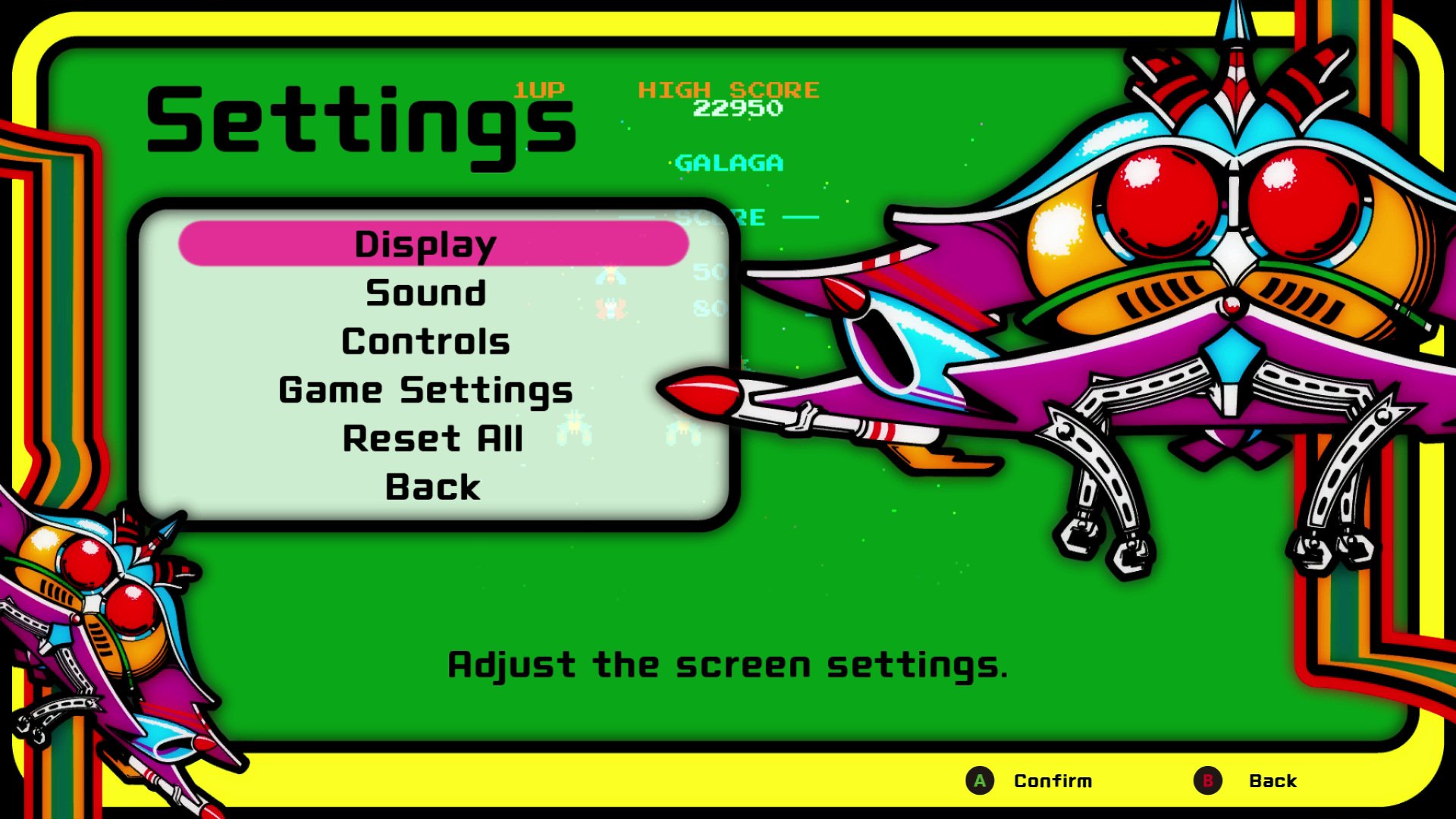
Galaga on Xbox One has a much larger file size than the 16 MB 360 game – a massive 898 MB! This version was developed in Unity and then ported to multiple platforms, which seems to be the reason for the increased file size.
898 MB is undoubtedly a lot of space for what started out as such a small arcade game, even taking into account the bloat caused by Unity. At least storage space is less of an issue on Xbox One than the 360. Besides, this edition actually has some nice enhancements over previous console ports. There options are so numerous that they come in four different menus: Display, Sound, Controls, and Game Settings.
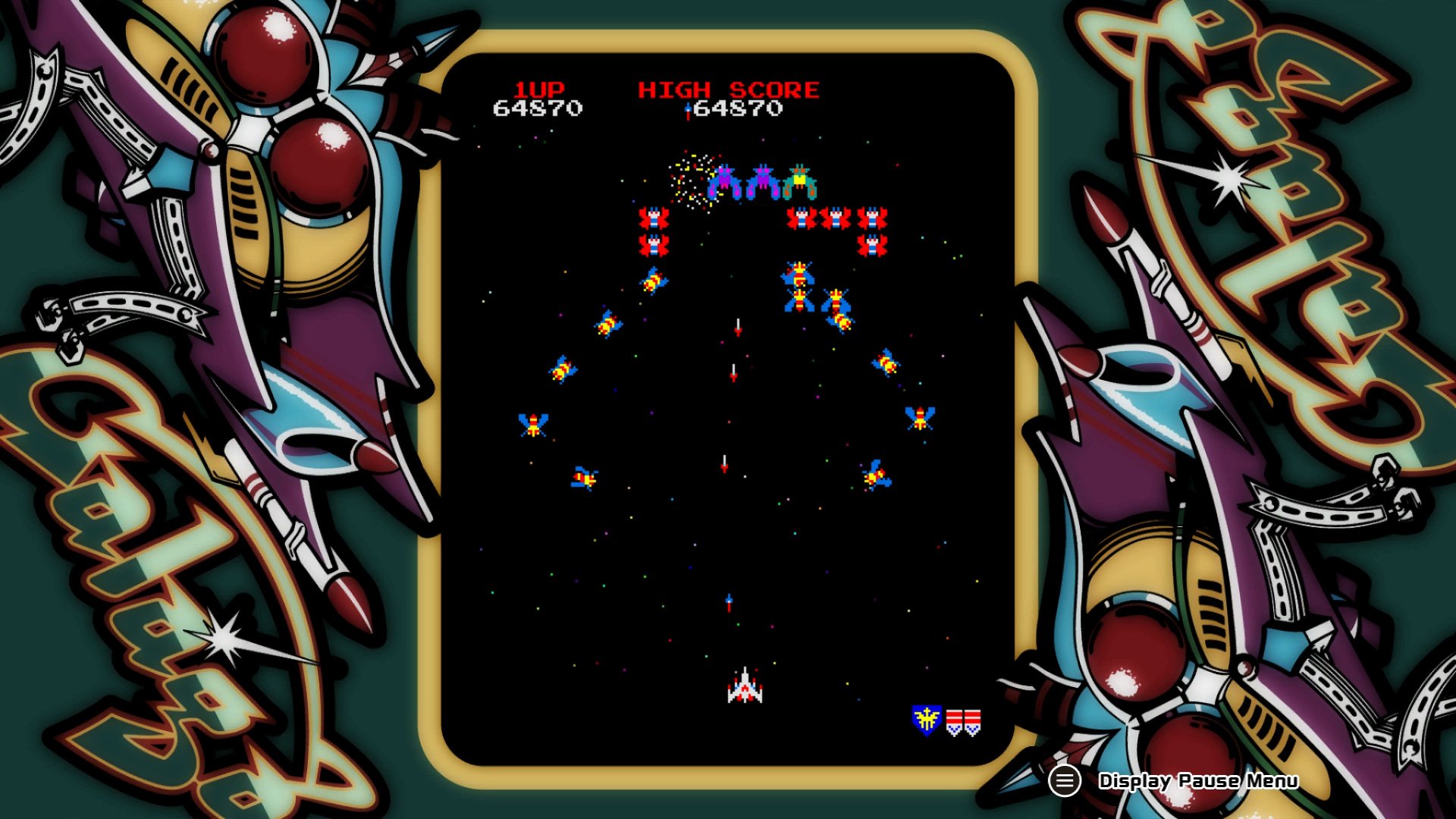
The Arcade Game Series: Galaga's Display Settings provide an impressive degree of control over how the game appears on HDTVs. You can still zoom in and out, and also add scanlines for an old-fashioned monitor effect.
This version also offers two widescreen borders, one in a muted color palette and one with bold colors. The bold version is too garish for my tastes. This version really should have offered the original American and Japanese arcade bezels as well as the choice of disabling borders entirely.
The biggest visual enhancement option is the ability to rotate the display 90 degrees. Galaga arcade cabinets use a vertically-oriented monitor, which is why console ports always have so much empty space on the sides of the display. Finally, this version allows dedicated fans to hang a monitor vertically and play with a much truer aspect ratio than a horizontal monitor could ever provide.

In the Sound settings players can adjust the quality of the sound, boosting and reducing certain elements as well as adjusting reverb length and depth, though most of this won't matter to the average player. But the sound test is something we can all enjoy — it lets us sample all of the game's music and sound effects. Ports of the arcade game doesn't usually offer that feature.
In the Game Settings, players can enable the option to start on any previously reached level and adjust starting lives and frequency of extra lives, just like the Xbox 360 version. And like that version, changing these settings will prevent your score from being submitted to the leaderboard. You can also toggle between the original arcade revision and a later revision, altering enemy behavior slightly – the 360 game couldn't do that.
Finally, players can select controller buttons for standard fire and rapid fire.
Achievements
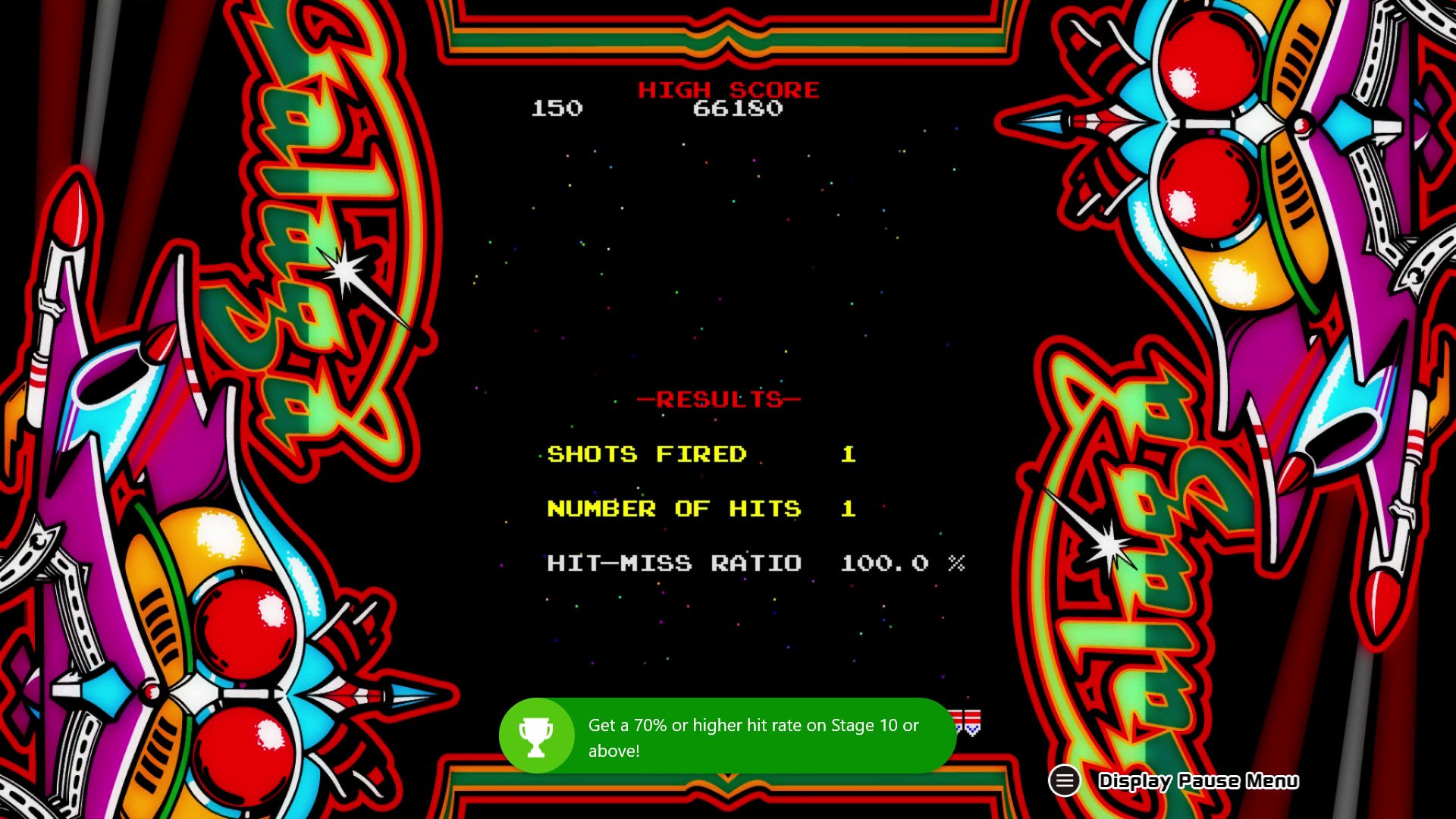
The Xbox 360 version of Galaga offers 12 Achievements worth 200 Gamerscore, all easy to get if you know what to do. Galaga on Xbox One ups the ante to 20 Achievements worth a total of 1,000 Gamerscore. Out of those, all players should be able to get 14 Achievements and 545 Gamerscore. Even if you don't go for the challenging ones, you'll still earn more than double what you could get from the 360 game.
The hard ones all involve completing specific Challenge Stages without missing an enemy. The enemies fly on-screen briefly and then fly off, leaving no room for error as you try to shoot them down. You can prepare for these Achievements by watching YouTube videos, but it will still take numerous repetitive attempts to perfect any Challenge Stage (excepting Level 19, which I count as an Easy Achievement).
Overall Impression
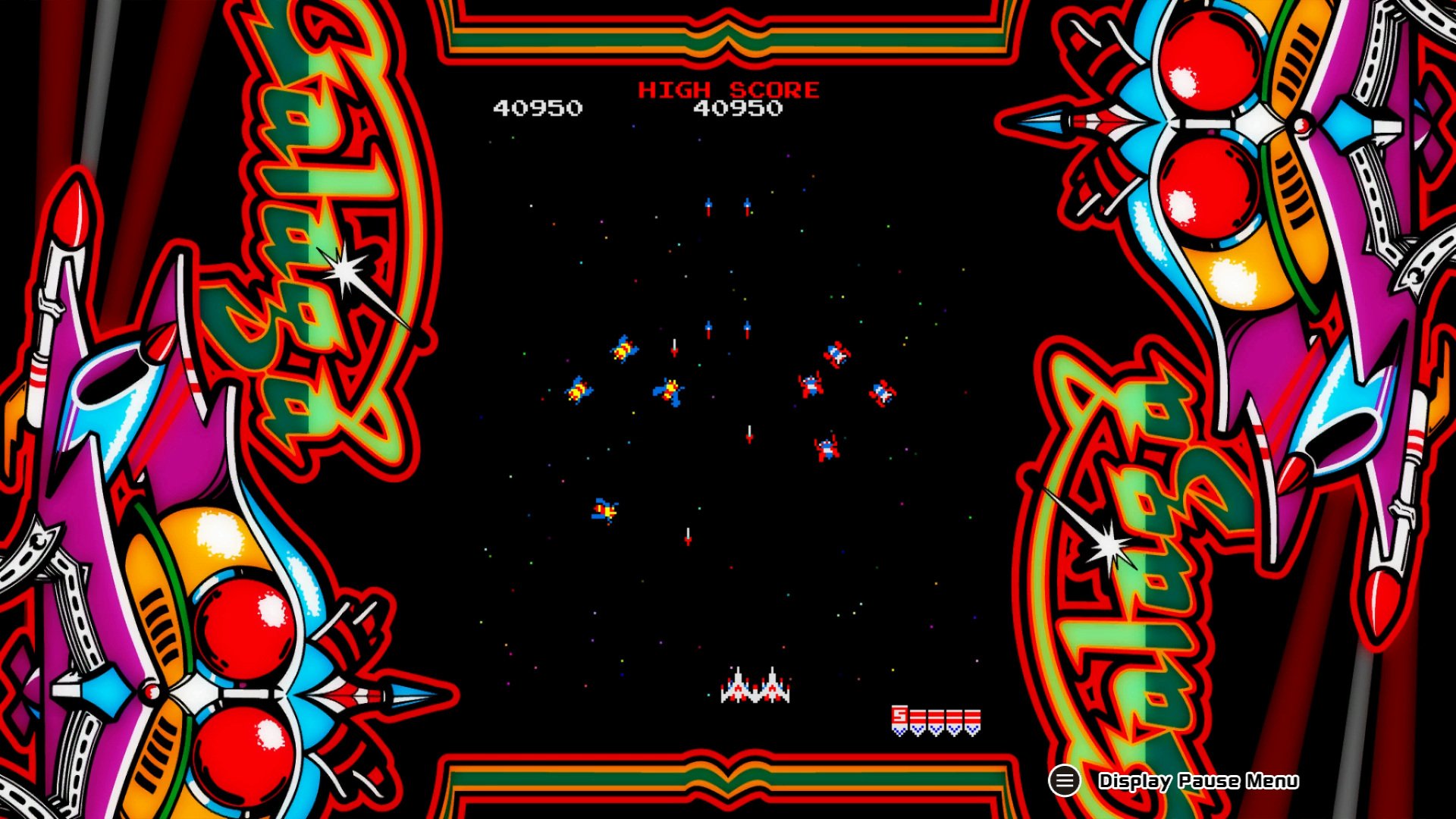
Arcade Game Series: Galaga is the best home version of the original Galaga arcade game yet. Whether or not the new features warrant an upgrade from the Xbox 360 version depends entirely on your devotion to Galaga and how much you care about Achievements. If you do like both Galaga and Achievements, this version is a must-buy.
This version of Galaga sells for $3.99 on its own or as part of a $7.99 3-pack that also includes Pac-Man (see our review) and Dig Dug. The 3-pack is easily a better value since you basically get one game for free. The fourth title in the Arcade Game Series, Ms. Pac-Man, is not included in the 3-pack and must be purchased separately.
- See Arcade Game Series: Galaga on Xbox.com
- See the Arcade Game Series 3-in-1 Pack on Xbox.com
- See the Arcade Game Series 3-in-1 Pack on Steam
Xbox One version provided for review by Bandai Namco.

Paul Acevedo was formerly a Games Editor at Windows Central. A lifelong gamer, he has written about videogames for over 15 years and reviewed over 350 games for our site. Follow him on Twitter @PaulRAcevedo. Don’t hate. Appreciate!

